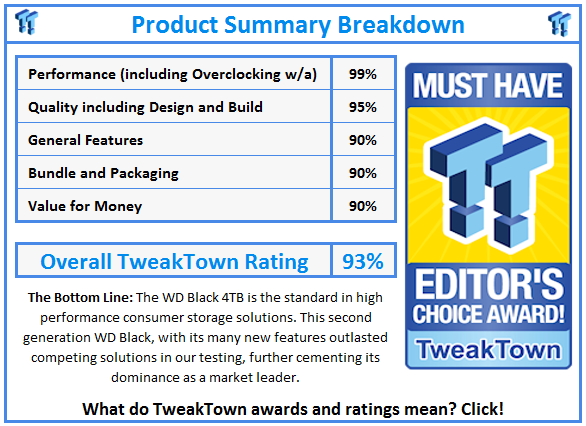Introduction & Specifications, Pricing and Availability
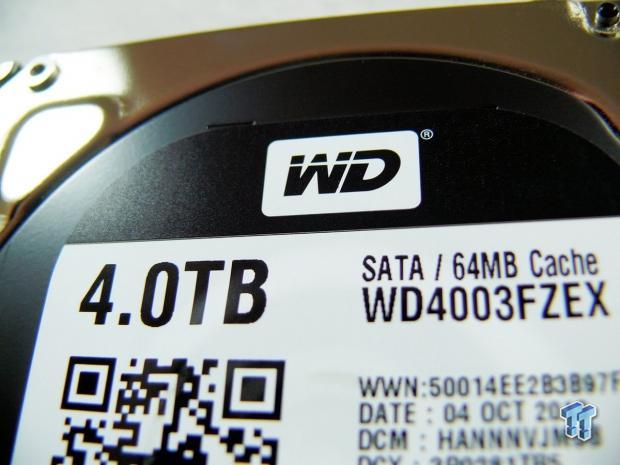
The Western Digital Black is a symbol of storage performance. Even if we go back to the days before solid state was king, the drive you wanted in your system was, next to the Raptor, a WD Black.
Now that we have reached what seems to be peak capacity for the time being, with both Seagate and WD having reached 4TB across their entire product lineup (minus the WD Blue), you may wonder what is next. Well, if you are Western Digital, you increase the performance of your flagship product.
The WD4003FZEX is the second generation, 4TB high performance solution from Western Digital. With this drive comes increased performance using a new High Resolution Controller and dual-core processor to increase drive precision and performance. Additionally, WD has added Vibration Control Technology to compliment StableTrac, resulting in more accurate tracking during read/write operations.
Let's dive in now and take a close look at it.
Specifications, Pricing and Availability
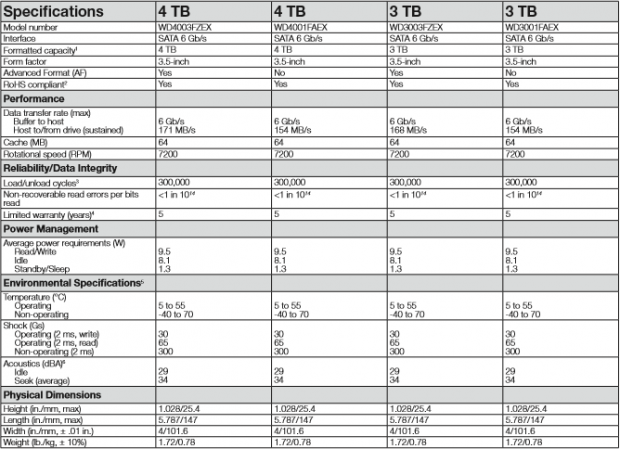
Looking at the specifications above, you will notice the new WD4003FZEX placed next to the first generation FAEX drive. Running down the specs list, we find the drive using the SATA 6 GB/s interface with a capacity of 4TB.
In addition to the new technologies we mentioned above, Advanced Format capability was added to this second gen drive as well. Moving on, we find a slight increase in spec'd transfers rates, with the new drive reaching 171 MB/s over the previous 154 MB/s.
The WD Black still enjoys a nice 64MB cache and its 7200-RPM spindle speed across five 800GB platters. Additionally, the load/unload cycles have stayed consistent at 300,000. The bit-error rate stands at 10e14, along with an industry leading five-year warranty.
The WD Black is available in four capacities ranging from 1TB to the 4TB, which we have in house today. Pricing of the 1TB model is a set at $89.99 with the 2TB, 3TB and 4TB models coming in at $159.99, $209.99 and $269.99, respectively.
WD Black 4TB HDD
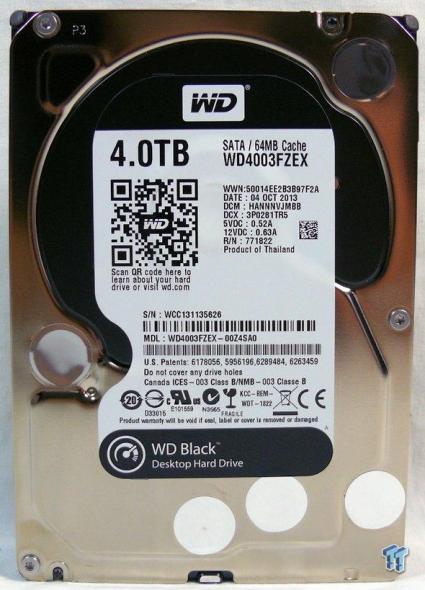
Our review sample of the WD Black was delivered in its bare drive form. At the top, we note the capacity at 4TB with 64MB cache. Another thing to note is the nickel finish on the drive itself.
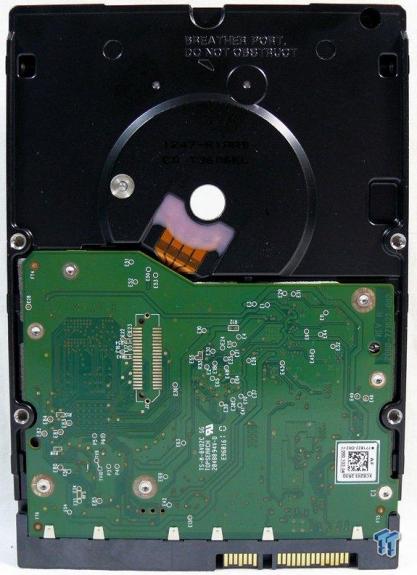
The backside of the drive houses a green PCB with several torx screws holding it in place.
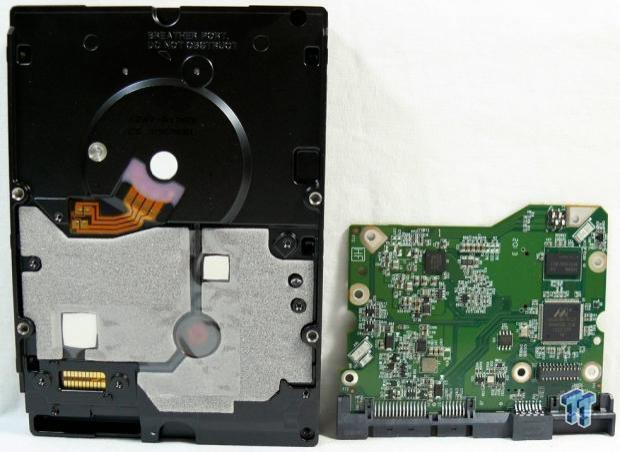
Removing the PCB, we find a foam layer protecting the drive and PCB.
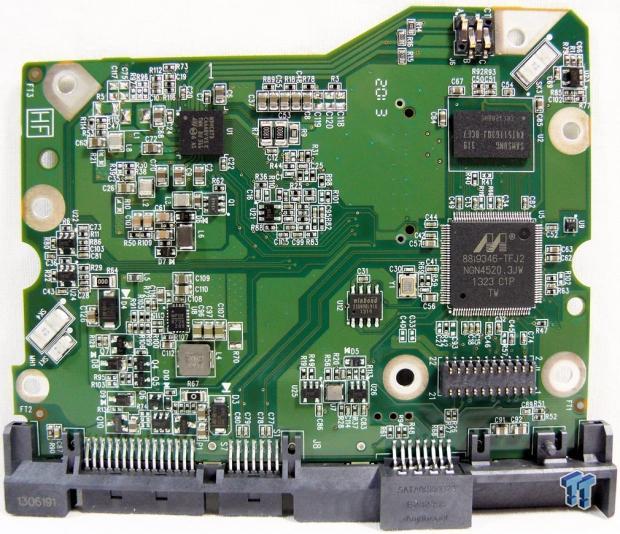
A closer look at the PCB reveals the Marvell 88i9346 controller, next to 64MB of DRAM cache. At the top of the drive, we have the STMicro spindle controller.
Benchmarks - Test System Setup and ATTO Baseline Performance
Desktop Test System
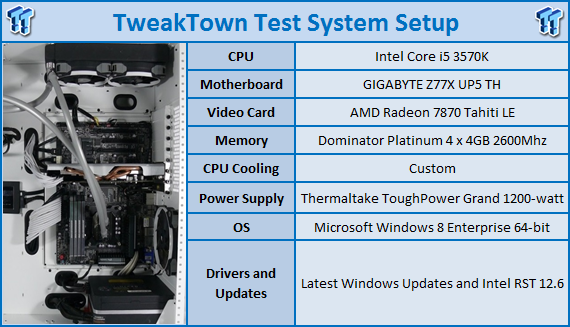
ATTO Baseline Performance
Version and / or Patch Used: 2.34
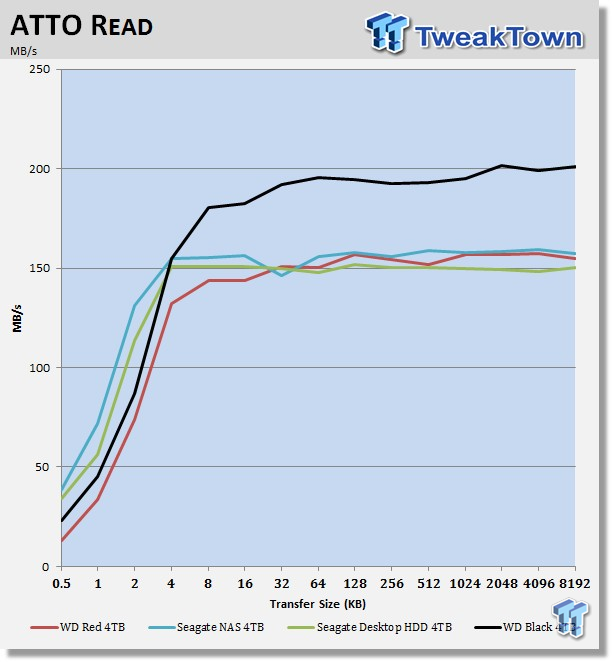
In ATTO read testing, the WD Black excelled as noted by the chart above. Here we see the drive reach a peak transfer speed of 202 MB/s with 2MB file sizes.
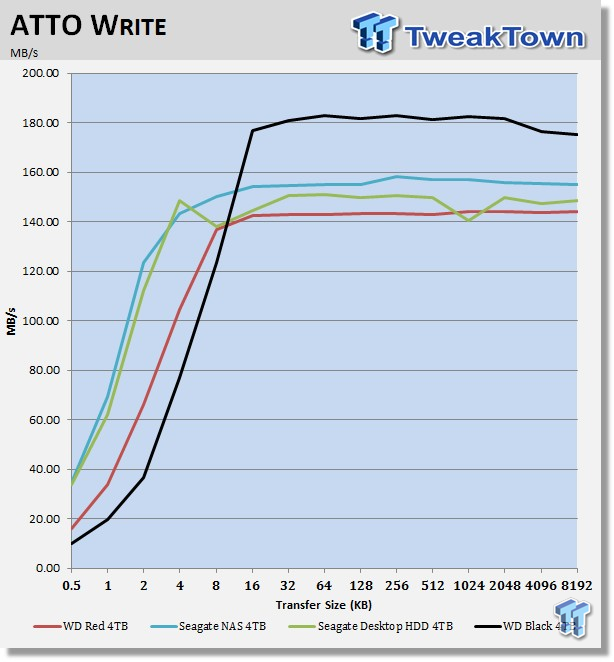
Write speed was equally impressive, where we have the Black touching 180 MB/s from 16K to 2MB file sizes.
Benchmarks - 4K Random Performance
IOMeter - 4K Random Performance with QD
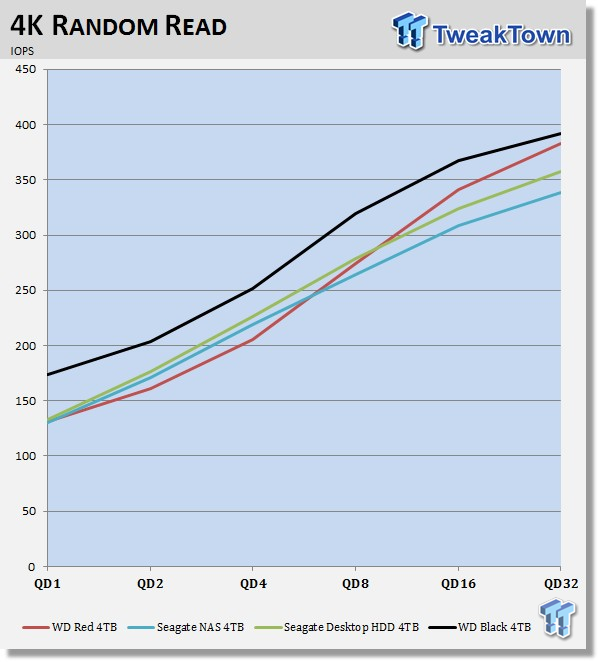
4K random read has the WD Black starting with 175 IOPS at QD1 and finishing just shy of 400 IOPS at QD32.
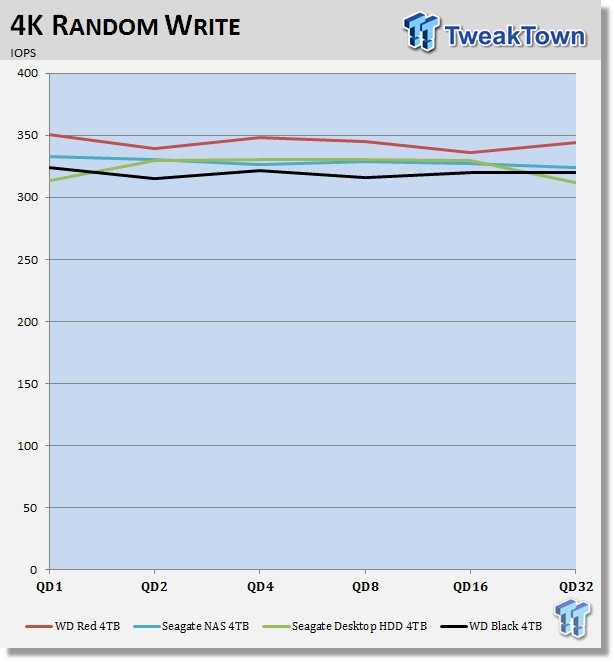
Rather surprisingly, the WD Black does not lead the charts when it comes to 4K random write. In fact, another WD drive leads in the area, the WD Red.
However, performance is consistent across the entire QD range.
Benchmarks - Sequential Performance
IOMeter - Sequential Performance with QD
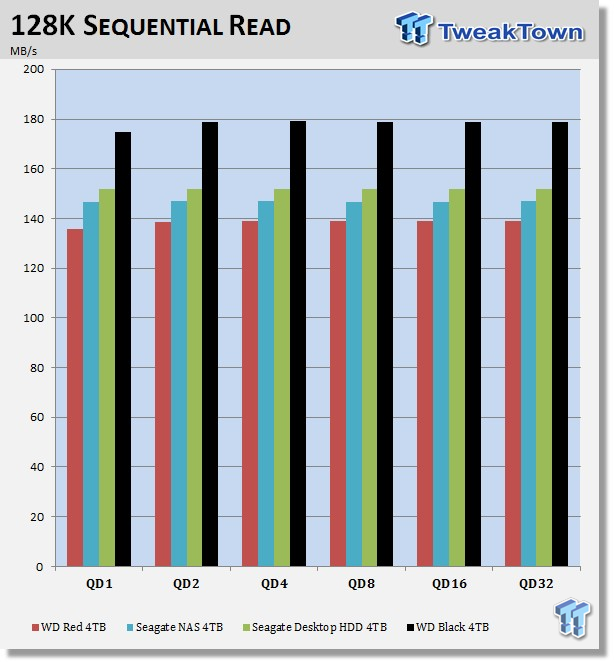
Sequential read started strong for the WD Black, just shy of 170 MB/s. As the QD increases, the drive responds by increasing sustained performance near 180 MB/s.
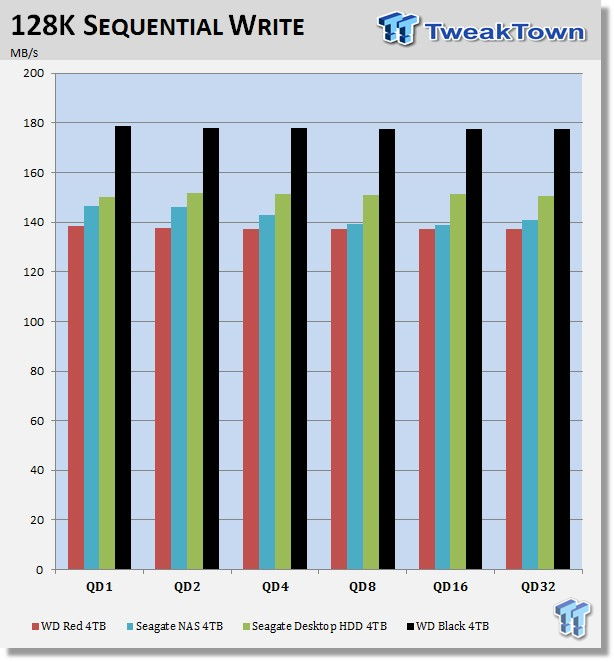
Sequential write had the WD Black showing equal performance. Here we have the drive touching close to 180 MB/s across the entire QD range.
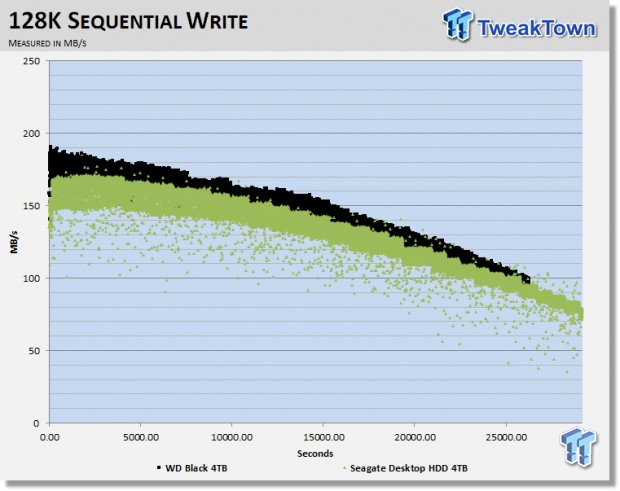
In this test, we write sequentially to the entire LBA range of the HDD to explore the performance of the HDD's with sequential activity. Here we find the WD Black showing consistent performance across the entire LBA range. In comparison, notice how the Seagate Desktop HDD carries a raindrop appearance across the chart.
Benchmarks - Drive Acoustics and Power Consumption
Drive Acoustics
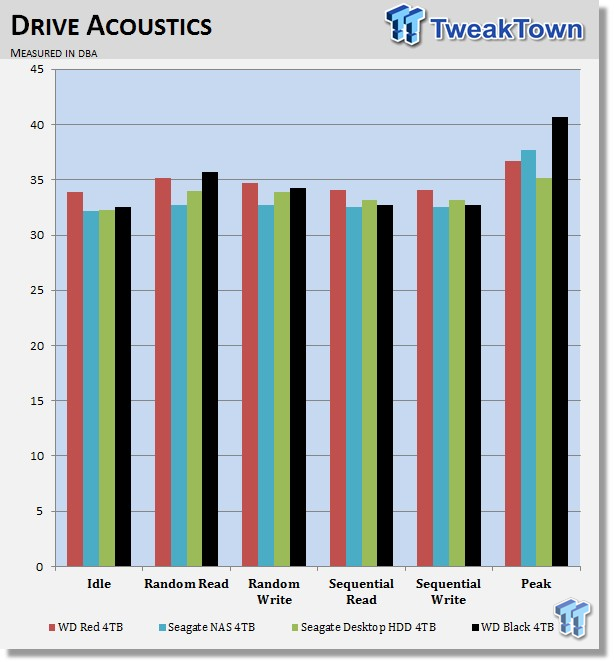
Drive acoustics is something that can be a very important metric when purchasing a drive. As such, we purchased and built a 12 x 12 x 12 box out of 2" thick insulating foam. In the center of the box, we place the drive on 3" acoustic foam. Sound level measurements are taken from a distance of 6 inches.
Looking at the chart above, we find all drives maintaining a steady and consistent noise level throughout testing. At its peak, the WD Black tops the charts just over 40dBa.
Power Consumption
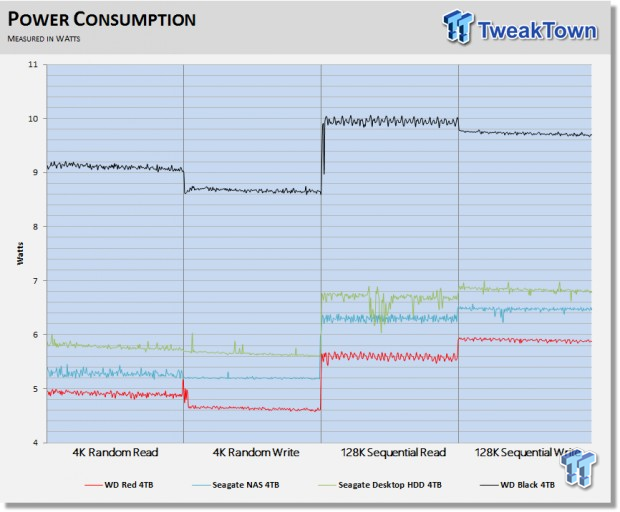
Our custom power testing samples each drive for a period of three minutes across each workload. In order to offer more granularity we sample the power in one-second intervals. 4K random read/write carries the least amount of power consumption for the WD Black, here we see the drive move from a touch over 9 watts down to 8.5 watts at the end of the workload. Peak power consumption comes during sequential read operations as the drive jumps to 10watts.
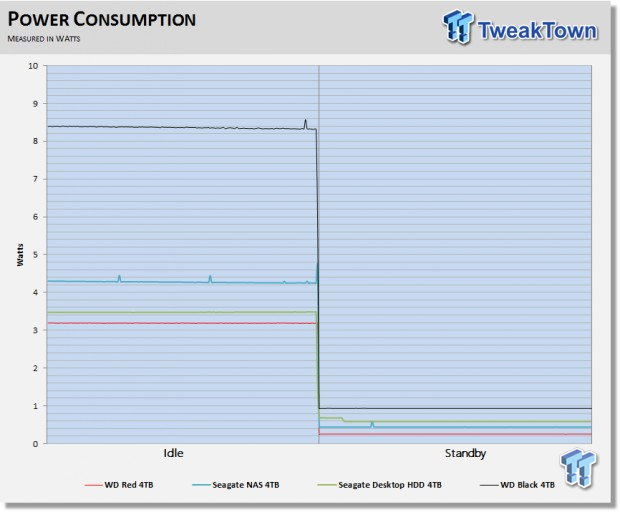
Idle power consumption for the WD Black hangs around at 8.1 to 8.3 watts, and after entering standby down to just 1 watt.
Benchmarks - PCMark 8 Hard Disk Tests
PCMark 8 - Hard Disk Tests
Version and / or Patch Used: 1.0.0
Developer Homepage: http://www.futuremark.com
Product Homepage: http://www.futuremark.com/benchmarks/pcmark8
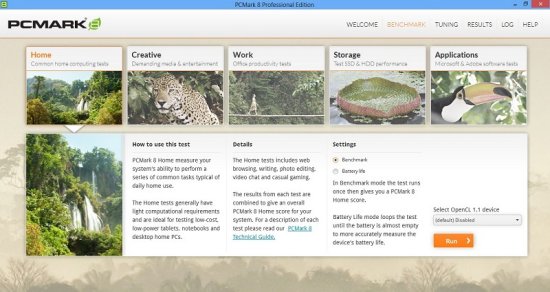
PCMark 8 is the latest version in our popular series of PC benchmarking tools. Improving on previous releases, PCMark 8 includes battery life measurement tools and new tests using popular applications from Adobe and Microsoft. Whether you are looking for long battery life, or maximum power, PCMark 8 helps you find the devices that offer the perfect combination of efficiency and performance for your needs.
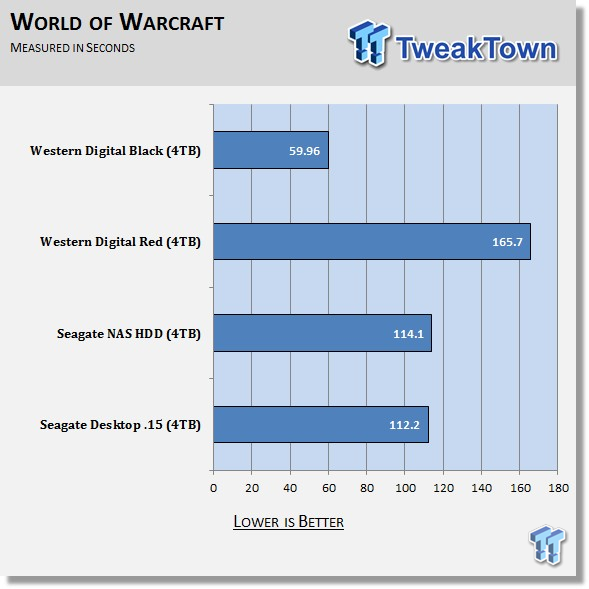
The World of Warcraft application trace left us with a score of 59.96 seconds for the WD Black, quite a bit quicker comparable desktop drives such as the Seagate Desktop HDD .15.
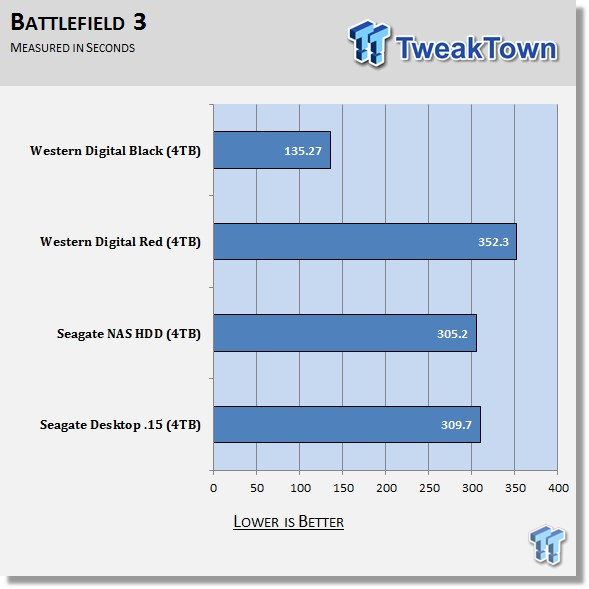
Battlefield 3 was even better, where we see the WD Black halve the score of competing solutions.
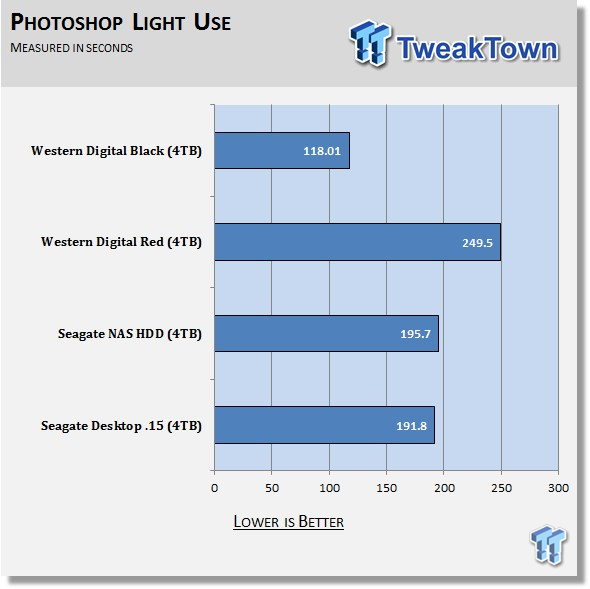
The Light Use Photoshop trace ended after 118 seconds.
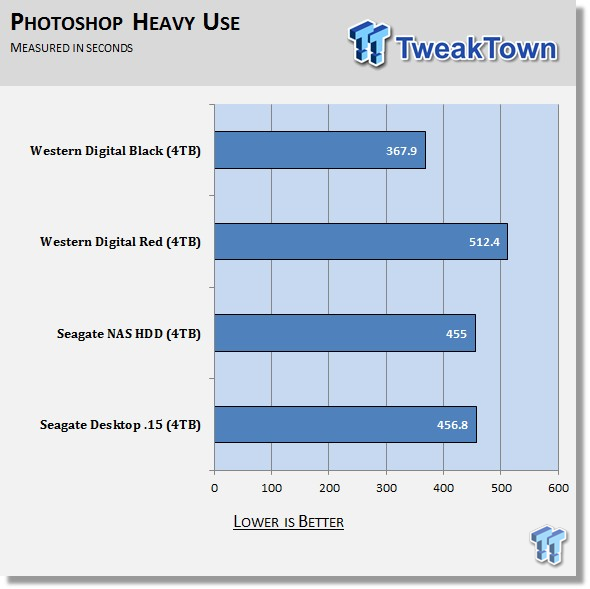
The Heavy Use scenario tightens the group up a little, with the WD Black ahead by just 88 seconds.
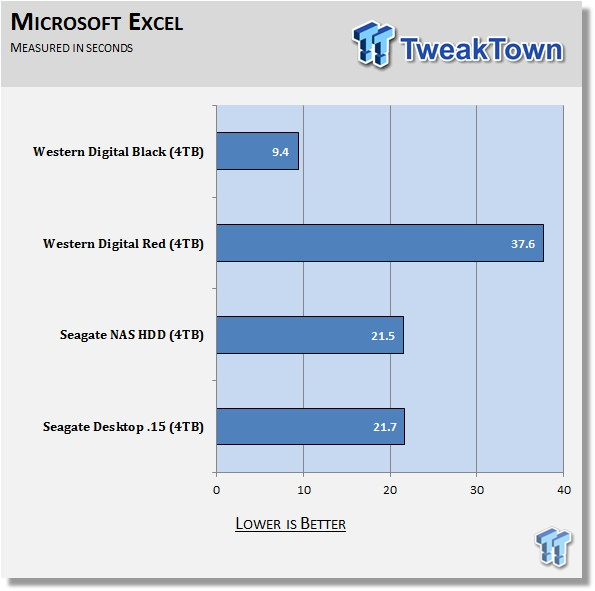
Excel allows the WD Black twice the performance, coming in at 9.4 seconds.
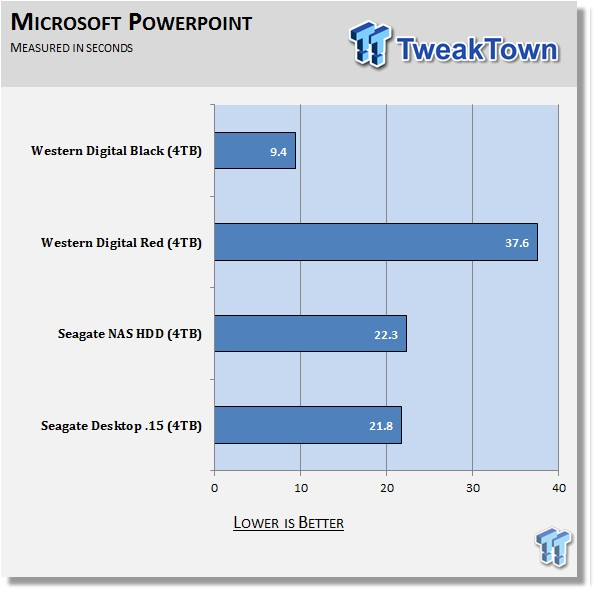
PowerPoint shows more of the same, another 9.4-second score for the WD Black.
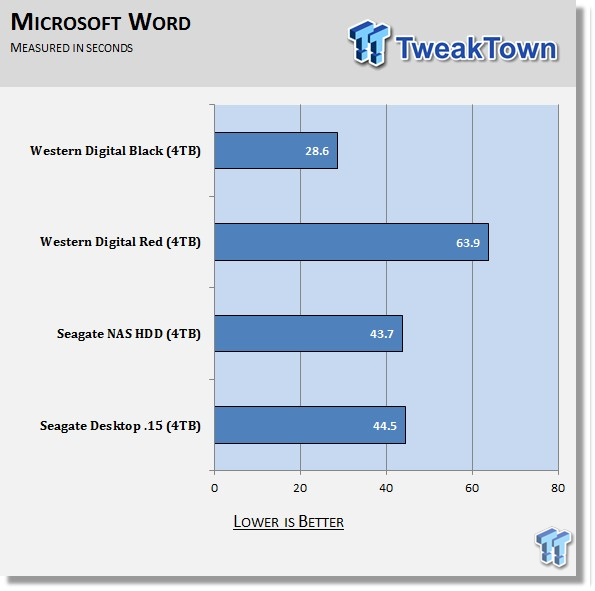
The Microsoft Word trace brings the Black in at 28.6 seconds.
Final Thoughts
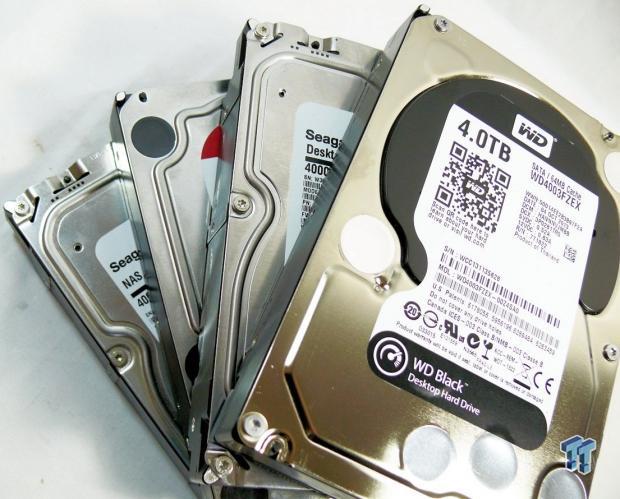
The second generation 4TB WD Black ushers in a new level of performance for consumer grade HDDs. This should allow gamers and creative professionals to achieve the performance and capacity they desire in one storage solution.
In our testing, the WD Black had no equals and if we look at the consumer HDD market at this point, you will see that it is the only offering available next to HGSTs 7K4000 with a 7200RPM spindle speed.
Now the obvious trade-off of the WD Black is power consumption, the drive used a touch over 10 watts in sequential workloads, and idle power consumption was not much lower at 8.3 watts. However, in my mind, if you are even thinking of using the WD Black, you are not concerned with power draw - you want performance and capacity.
As for use scenarios for the WD Black, I feel it would suit very well, consumers who want a high capacity, high performance OS drive for their gaming adding to this creative and media professionals that stream multiple large workloads.


